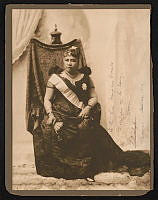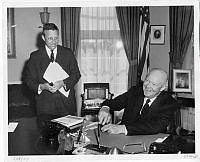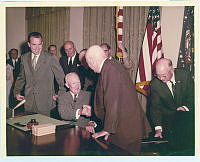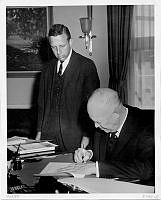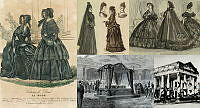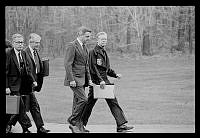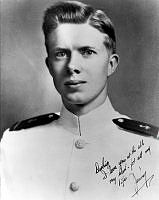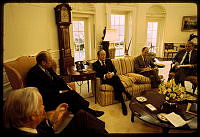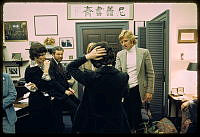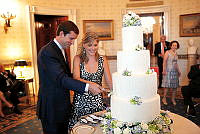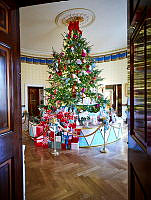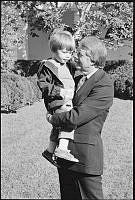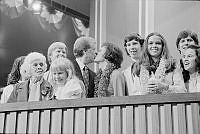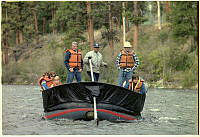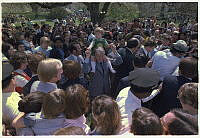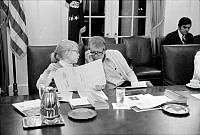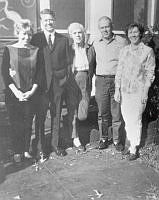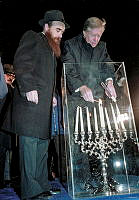
Treasures of the White House: Angelica Singleton Van Buren
Signed and dated, vertically at left edge on balustrade: H. Inman. I 1842.
890.2061.1
Martin Van Buren, eighth President, had been a widower for 18 years when he moved into the Executive Mansion in 1837. He was never to remarry, so the Van Buren White House lacked a hostess until that role was filled in 1839 by Angelica Singleton Van Buren (1816–1877). She was a native of South Carolina, the daughter of a wealthy and well-connected cotton planter and a relative by marriage of Dolley Madison, social doyenne of the capital. It was through Mrs. Madison that she met Van Buren's son and private secretary, Abraham, at the White House. They were married in November 1838, and on New Year's Day 1839 Angelica became the president's official hostess.
Inman displays artistic diplomacy in his treatment of the marble bust of Martin Van Buren on the right. Tricks of perspective make the sculpture appear to be farther back in the picture space than in fact is logical. Inman reduces the sculpture's actual size as well, so it does not compete with the head of Angelica. At the same time he strongly–and arbitrarily–spotlights it, thus ensuring that the president will not fade into insignificance.
Inman's Angelica is so winning in her frank expression and her womanly warmth that a dominant trait of her personality is quite obscured–hauteur. She and her husband had gone in the spring of 1839 to Europe, as ambassadors-without-portfolio. Angelica had been mightily impressed with the customs at the courts of Queen Victoria and Louis Philippe, where queens and even bourgeois "princesses" did not stand in receiving lines and shake the hands of the citizenry, the custom at the White House. Rather, they stood on platforms and received the homage of their subjects. Angelica briefly introduced the practice at the White House. When a Whig congressman branded her a "Democratic peacock in full court costume, strutting," she abandoned the attempt. Despite the elegance of her costume in this portrait, the vital, accessible human being of Inman's vision is Angelica Van Buren to all who have seen it.
Source: William Kloss, et. al., Art in the White House, New York: Abrams, 1992.
- Artist
- Henry Inman (1801-1846)
- Medium
- Oil on canvas, 421/4 x 33 5/8 inches (107.3 x 85.4 cm)
- Credit
- Bequest of Travis C. Van Buren, 1890













